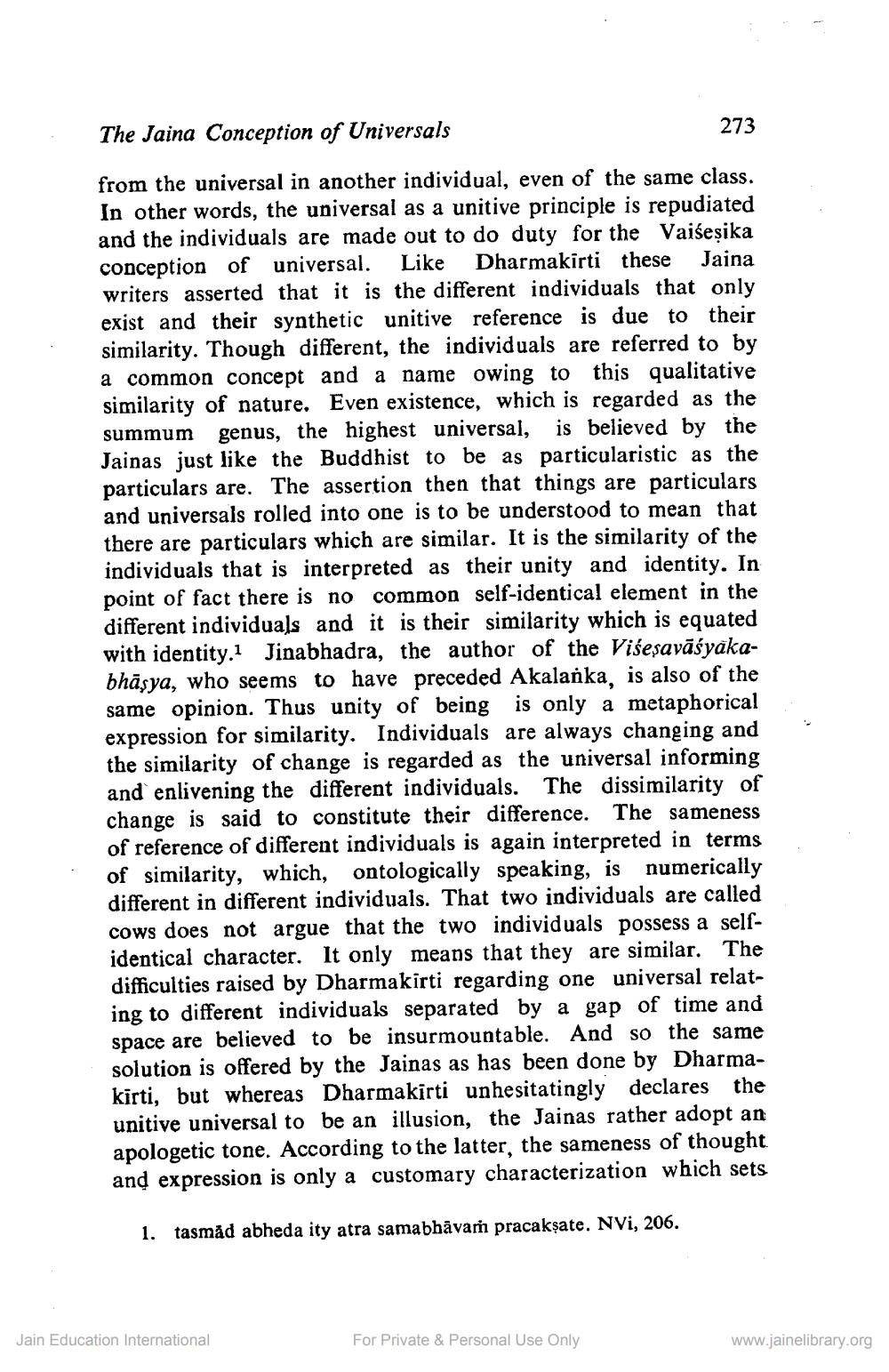________________
The Jaina Conception of Universals
273
from the universal in another individual, even of the same class. In other words, the universal as a unitive principle is repudiated and the individuals are made out to do duty for the Vaiseșika conception of universal. Like Dharmakirti these Jaina writers asserted that it is the different individuals that only exist and their synthetic unitive reference is due to their similarity. Though different, the individuals are referred to by a common concept and a name owing to this qualitative similarity of nature. Even existence, which is regarded as the summum genus, the highest universal, is believed by the Jainas just like the Buddhist to be as particularistic as the particulars are. The assertion then that things are particulars and universals rolled into one is to be understood to mean that there are particulars which are similar. It is the similarity of the individuals that is interpreted as their unity and identity. In point of fact there is no common self-identical element in the different individuals and it is their similarity which is equated with identity.1 Jinabhadra, the author of the Visesavāśyakabhāsya, who seems to have preceded Akalanka, is also of the same opinion. Thus unity of being is only a metaphorical expression for similarity. Individuals are always changing and the similarity of change is regarded as the universal informing and enlivening the different individuals. The dissimilarity of change is said to constitute their difference. The sameness of reference of different individuals is again interpreted in terms of similarity, which ontologically speaking, is numerically different in different individuals. That two individuals are called cows does not argue that the two individuals possess a selfidentical character. It only means that they are similar. The difficulties raised by Dharmakirti regarding one universal relating to different individuals separated by a gap of time and space are believed to be insurmountable. And so the same solution is offered by the Jainas as has been done by Dharmakirti, but whereas Dharmakirti unhesitatingly declares the unitive universal to be an illusion, the Jainas rather adopt an apologetic tone. According to the latter, the sameness of thought and expression is only a customary characterization which sets
1. tasmåd abheda ity atra samabhāvam pracakşate. NVi, 206.
Jain Education International
For Private & Personal Use Only
www.jainelibrary.org




